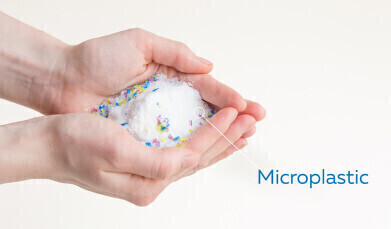Microplastics analysis
Analytical Methods to Find Microplastics in Salt
Oct 04 2023
The pervasive problem of microplastic pollution has raised concerns about its presence in one of the most essential commodities - salt. With microplastics being found in oceans, rivers, and even in the air, it's no surprise that they can infiltrate the salt we consume. Analysing salt for microplastics is a crucial step in understanding the extent of this contamination and mitigating its potential health risks. Several analytical methods have been developed to detect and quantify microplastics in salt.
- Microscopy Techniques: One of the earliest and most straightforward methods for detecting microplastics in salt is through microscopy. Researchers can use optical microscopes or electron microscopes to visually identify and count microplastic particles. While this method is relatively simple, it requires skilled analysts and can be time-consuming, making it less practical for large-scale studies.
- Spectroscopy: Infrared spectroscopy and Raman spectroscopy are powerful techniques for identifying microplastics. They work by measuring the unique spectral characteristics of different materials, including plastics. Spectroscopy can provide information about the chemical composition of microplastics in salt, helping to differentiate them from natural salt particles.
- Chemical Digestion: Chemical digestion involves using strong acids or enzymes to break down organic matter in a sample, leaving behind microplastics. This method is particularly useful for isolating microplastics from complex matrices like salt. After digestion, the microplastics can be analysed using various techniques, including microscopy and spectroscopy.
- Filtration: Filtration techniques involve passing a salt sample through a filter with a defined pore size, which captures microplastics while allowing salt particles to pass through. After filtration, researchers can visually or chemically analyse the captured particles. This method is suitable for larger microplastics but may miss smaller particles.
- Density Separation: Density separation techniques exploit the difference in density between microplastics and salt particles. Salt is denser than most microplastics, so by adjusting the density of the solution, microplastics can be separated and concentrated. This concentrated fraction can then be analysed using microscopy or spectroscopy.
- Microplastic-specific Dyes: Fluorescent dyes that selectively bind to microplastics have been developed. These dyes can be added to a salt sample, and the microplastics will fluoresce when exposed to specific wavelengths of light. This fluorescence can be detected and quantified using specialised equipment, offering a rapid and precise method for microplastic detection.
- Microplastic Extraction and Counting: Some methods involve extracting microplastics from a salt sample using solvents like water or organic solvents. Once extracted, the microplastics can be counted using various techniques, such as image analysis software.
It's important to note that each method has its advantages and limitations, and the choice of method depends on factors like the size of microplastics being targeted, the complexity of the sample matrix, available equipment, and budget constraints. Combining multiple techniques often yields more robust results.
Analysing salt for microplastics is a critical step in monitoring and mitigating the presence of these contaminants in our food supply. These analytical methods enable researchers and regulatory bodies to assess the extent of microplastic pollution in salt and take appropriate actions to reduce its impact on human health and the environment.
Digital Edition
IET 35.2 March
April 2025
Air Monitoring - Probe Sampling in Hazardous Areas Under Extreme Conditions - New, Game-Changing Sensor for Methane Emissions - Blue Sky Thinking: a 50-year Retrospective on Technological Prog...
View all digital editions
Events
Jun 04 2025 Koeln, Germany
Jun 04 2025 Shanghai, China
Jun 08 2025 Denver, CO, USA
Jun 09 2025 Raleigh, NC, USA
Jun 10 2025 Toulouse, France









.jpg)









